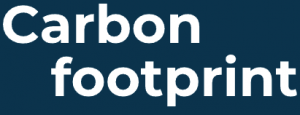Carbon Added Accounting

Case study: a product of an internet shop
In the chain for an internet store, you can add the CO2 emissions for each step from production to delivery to the end customer:
- A supplier delivers raw materials to the producer. The supplier indicates how much emission this involves: for the extraction itself, but also for the storage and transport to the producer.
- The producer buys these raw materials and processes them into the final product. The emissions from this process, including any storage, are added by the producer to the supplier’s emissions. And he passes this figure on to the next in the chain:
- A transporter picks up the final product from the producer and makes sure it arrives in the warehouse of the internet store. The transporter also adds its emissions to the previous emissions of the producer and the supplier and passes on the total emissions up to that point to the Internet store.
- The Internet store processes an order from the end customer and asks a transporter to bring the final product to the end customer. In doing so, he again passes on his own emissions plus the total of the previous steps to the transporter.
- The transporter delivers the end product to the customer. To do this, he has first collected it from the warehouse of the internet store and via a distribution center it arrives at the end customer. He adds the emissions for the transport, the storage and processing in the distribution center and the final transport to the previous emissions.
In this way, the total emissions from the extraction of the raw materials until delivery to the customer are transparent. The comparison with VAT is logical in this respect, with the important difference that you deduct VAT but with Carbon Added Accounting you add up all the emissions.
Everyone in the chain can start
It may seem like you can only start if all your partners and suppliers apply Carbon Added Accounting. But that is not necessary. There is enough standard information available to start with. You can then engage with your partners to ensure that the information on emissions becomes increasingly accurate.
Customers and governments demand insight into emissions
Many people are rightly concerned about climate change. Therefore, an increasing group will want to have insight into the emissions involved in a particular product. We have seen similar developments in the fashion industry or with food. People want to be sure that their T-shirt was not produced using child labor, and they pay attention to animal welfare when they buy meat. It is then logical that they ask the same questions about CO2 emissions. In addition, there is of course the government’s desire to reduce emissions. Companies must therefore be able to demonstrate what they are currently emitting and what the final reduction is that they have achieved.
